20 tips for learning to ride an Electric skateboards
1. Skateboarding up and down
There are two ways of standing: one is with the left foot in front and toes to the right, also called the forward stance; the other is with the right foot in front and toes to the left, also called the reverse stance. Most people skateboarding adopt the former stance. The techniques described later are all based on this stance. If you think this way of standing is uncomfortable, you can also change the direction and use the second standing method.
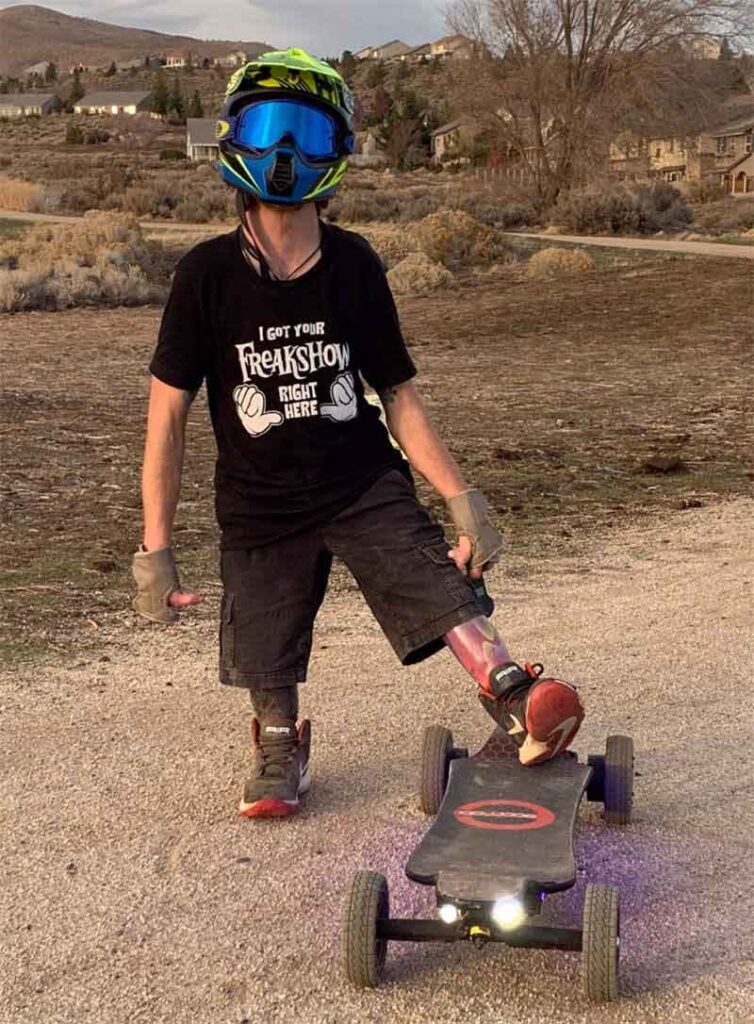
(1) Preparation: Stand with both feet on the ground and place the skateboard flat on the ground in front of your feet. Getting on the board: First put one foot on the front of the skateboard, while the other foot is still on the ground.
(2) Move the body’s center of gravity to the feet that are already on the board, tilt the upper body slightly forward, bend the knees, and extend the arms to maintain balance.
(3), (4) Push your feet lightly on the ground, then put it on the skateboard and place it on the back of the skateboard. At this time, the entire body and skateboard begin to slide forward.
When getting off the skateboard:
(1) When the skateboard has not stopped completely and is still sliding forward, put your weight on the front foot and put the back foot on the ground like a landing gear. (
2) After the back foot lands on the ground, the center of gravity is immediately transferred to the back foot, and then the front foot is lifted up so that both feet fall on one side of the skateboard. When you can get on and off the skateboard freely, you should try to change the position of your front and rear feet to become familiar with the reverse skating posture.
2. Coasting
The skater places his right foot on the middle front of the skateboard to the right. Place your left foot on the ground and focus on your right foot. Push on the ground with your left foot to slide the skateboard forward, then put your left foot up and step on the tail of the skateboard, maintain your standing balance, slide for a while, push on the ground with your left foot, and repeat. Practice this repeatedly, and after you master it better, you can glide longer distances. You can start doing 10m, 20m,
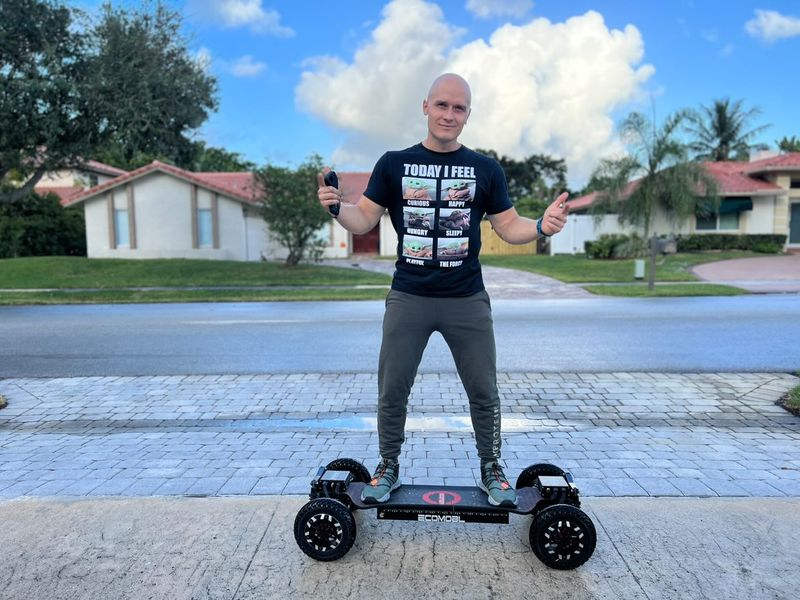
Then increase it to 50m and 100m, and practice repeatedly until you can easily and skillfully accelerate the skateboard. You must master the change of center of gravity to determine the direction and speed of the skateboard.
3. Obstacle slide
In slalom skating, quick stops and sharp turns are very important skills. When sliding down a slope, the speed is relatively fast. You must learn to use the stopping method of keeping your feet on the skateboard and turning the skateboard laterally to brake until the movement is stopped. There are two ways to change the speed of the skateboard: one is to control the center of gravity with the back foot and try to lean forward to drive the skateboard forward; the other is to bang the elastic skateboard surface with both feet and use the elasticity to glide forward. As long as you master the balance and be flexible with your feet as mentioned above, you will have mastered the technique of obstacle skating.

3. Skateboarding reversal skills
Slide the skateboard forward to reach the appropriate speed, and spread your feet as wide as possible across both ends of the skateboard. Place your weight on your front foot, your left foot, and lift the tail of the board while rotating it 180 degrees clockwise (turning backward or outward). If done correctly, the skateboard will turn upside down when completed and the right foot will become the supporting foot.

4. Skateboarding 360-degree rotation skills
Skaters find their balance by pushing slightly while skating, swinging back and forth or in circles. Try to keep the skateboard as level as possible. When ready, swing your arms counterclockwise. While maintaining balance, you can also make one final push to the left. Put your weight on your right foot, swing your arms to the right, and rotate your entire body. When turning, the rear wheel is used as the axis. Try to keep the rear wheel as level as possible. Do not lift the front of the board too high. In fact, there is no need to pay attention to the front end of the skateboard. Just put your center of gravity on the tail of the board and increase the rotation. The front end will naturally lift and the height will be just right.
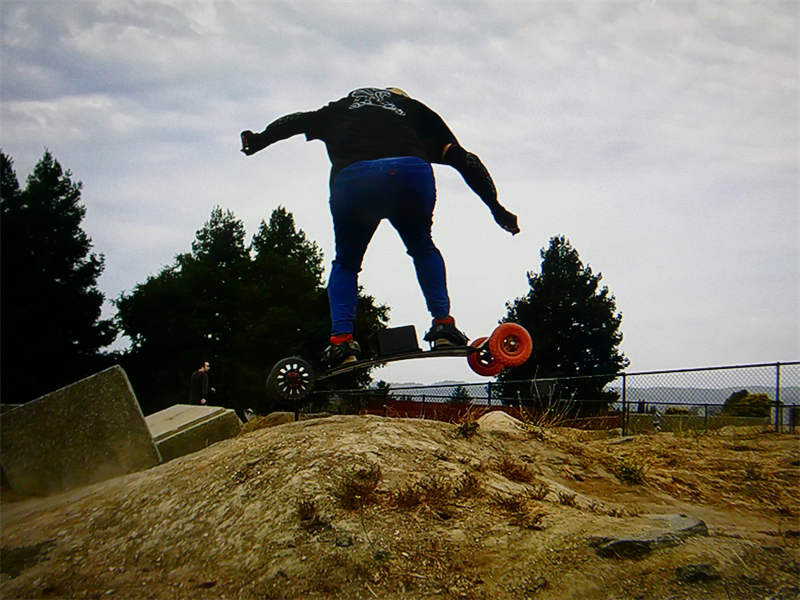
5. Skateboarding single-wheel spinning skills
The skater drives to the appropriate speed, tilts the front end of the skateboard, and uses the rear wheel to make a 360-degree rotation. To maintain good body balance, try to keep the skateboard in the air for as long as possible. Grasp the front end of the skateboard with your hands to maintain the fulcrum of balance, allowing you and the skateboard to rotate together. Then step on the side of the skateboard with your back foot, grab the skateboard with your hands, and make one of the rear wheels lift off the ground, turning it at least two times.
6. Sliding downhill
Try to choose a longer slide. It is best to have a fast sliding section, a medium-speed sliding section, and a buffer section that extends far. This kind of slide is most suitable for beginners to practice downhill sliding. The technical focus of downhill skiing is control, speed is secondary. You must first learn to skate steadily. When skating downhill, place your feet on both ends of the skateboard. When you encounter a turn or need to cross a hill, move your feet to the center of the skateboard. Your face and body should be facing forward. , crouch down, bring your thighs close to your chest, and stretch out your hands.

7. Circle turning skills
The skateboarder pushes the skateboard forward, then stands on it, with both feet straddling the left foot. Place weight on the tail of the board to lift the end of the board an inch or two. When the end of the board is in the air, the body rotates clockwise; when the front wheel touches the ground, the skateboard deflects to the right. Connect this series of movements together and practice continuously.
8. Lowering the sill technique: When approaching the sill, shift the center of gravity to the back foot. When the end of the board passes the sill, lift the front wheel. Maintain this position, squat down slightly, and prepare to land.

9. Tips for climbing the hurdles
As they approach the sill, the skater shifts their weight onto their back foot and lifts the end of the board over the sill before reaching the sill. Quickly shift your weight from your back foot to your front foot while in the air. Press the front of the skateboard onto the step so that the tail of the board is also on the step.
11. Seesaw technique
Push or push the board up to gliding speed. The right pedal is at the end and the left pedal is at the front for control, or behind the front wheel for rocking. Shift your weight to your right foot and lean forward to keep the end of the board in the air as long as possible. You can let the tail of the board gently scrape the ground occasionally to maintain balance.
12. 180 degree tilt stop technique
During sliding, the end of the board must be raised until the end of the board scrapes the ground. At the same time, the entire body rotates 180 degrees clockwise. If the rocker and rotation are in sync and the supporting foot is stable enough, the skateboard will rotate 180 degrees and stop.
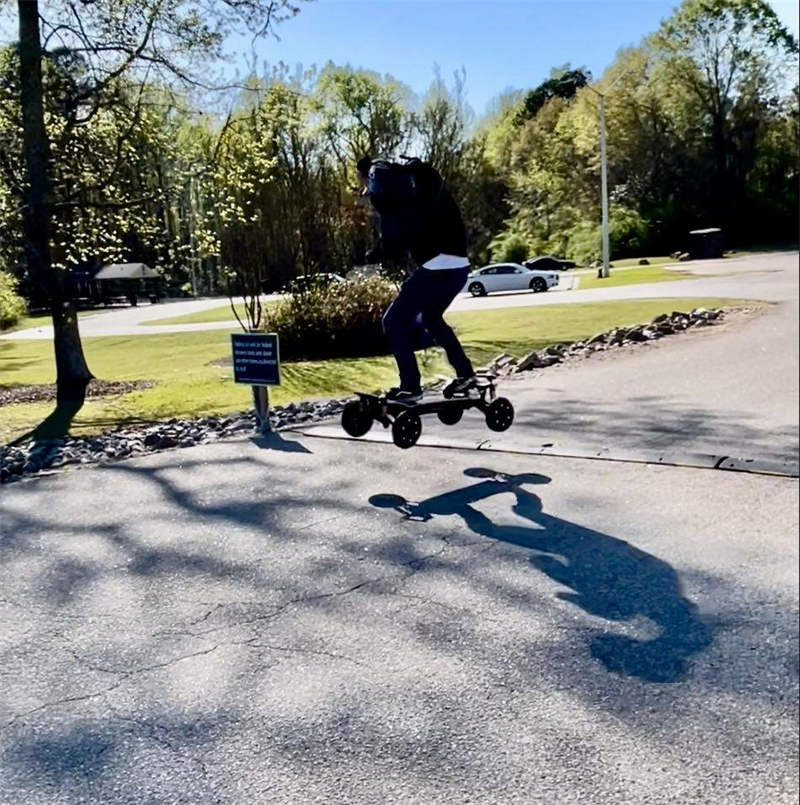
13. Feet techniques:
a. Heel hanging technique
Keep the skateboard at an appropriate speed, rotate the front foot so that the toe is facing the tail of the board, the heel overlaps the end of the board, put the center of gravity on the big toe of the left foot, and slowly move the other foot to the front of the skateboard. While your heels are in the air, bend your knees to maintain balance.
b. Spin skills on the board
The skater slides the board first. Move your left foot so that your heel presses against the end of the board. With your weight on your big toe, move your right foot to the other end of the board. Shift your weight to your right foot, making it your pivot. Rotate your left foot clockwise around your right foot, while your right foot also rotates, and finally balances with your left foot.
14. Skateboarding spin jump skills
The skateboarder drives and slides, keeping the skateboard horizontal and slightly squatting down. Jump up and rotate 180 degrees. If you are using a push-and-turn forward slide, pull your legs together slightly when you jump up. When falling, the distance between the two feet is about 30 cm. Don’t worry about the exact location of your landing, just place your feet on either end of the board.
15. Jumping skills for skateboarding
Prepare to jump. When you take off, your movements should be steady and leisurely. This will make the jump easier to control. The length of the jump depends on each situation. When falling, the center of gravity falls between the legs, with the left foot in front, and two skateboards are required.
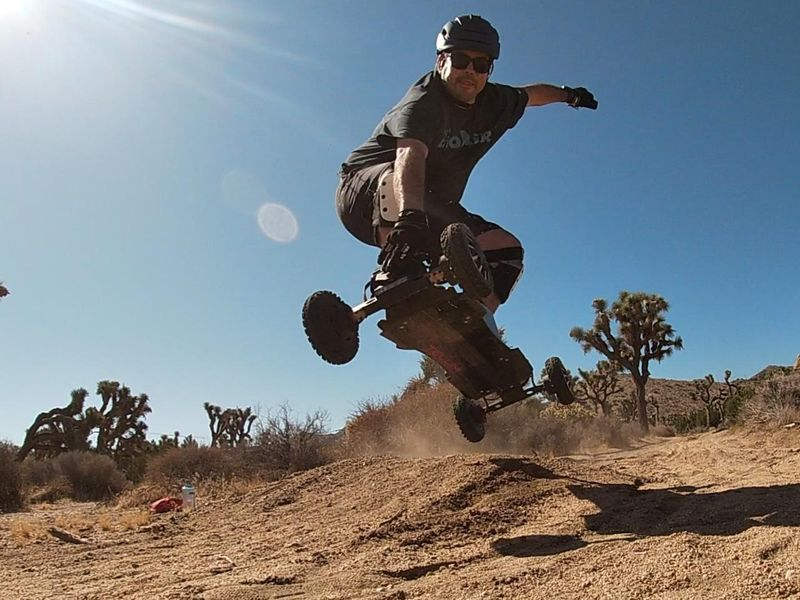
16. Jump up with the person and the board separated
Slide forward. Keep your feet close to each other as you move forward. Place your feet on the front half of the board, but behind the front wheel. Jump vertically as you approach the bar. Eyes on skateboards.
Try to land in the middle of the skateboard, roughly in the same position as your jump. If the force is even when falling and the legs are slightly bent, the impact force of falling on the board will be easily offset.
17. Jumping up with a board
When the skateboarder is driving and gliding, when approaching an obstacle, he bends his knees slightly, swings his arms, and uses his back foot to lift the front end of the skateboard, using the speed inertia to carry the skateboard over the obstacle. When landing, pay attention to the cushioning action of the legs. The center of gravity is always between the two feet and the legs are slightly bent.
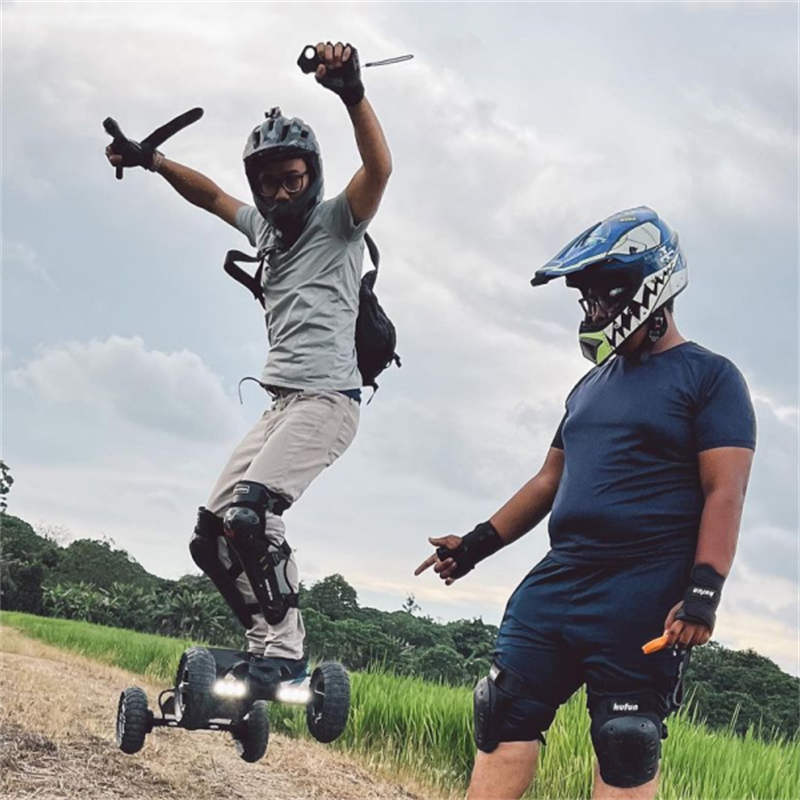
18. Strip friction skills
The skateboarder is driving and gliding. When approaching the obstacle, the knees are slightly bent, the arms are pre-swung, and the back foot is used to make the skateboard fly with the body. Look at the skateboard and pay attention to the balance on the edge of the obstacle. When falling, the center of gravity falls on Between the legs, pay attention to the cushioning action of the legs when landing.
20. Curved body
Skate forward, or slide down the slope. Place your feet side by side behind the front wheel of the skateboard. Lean forward and grab the front of the skateboard with both hands. Hold your knees with your arms and slowly squat down with your buttocks close to your heels. Tilt your body left and right, and adjust the ends of the board with your hands to control the direction.




